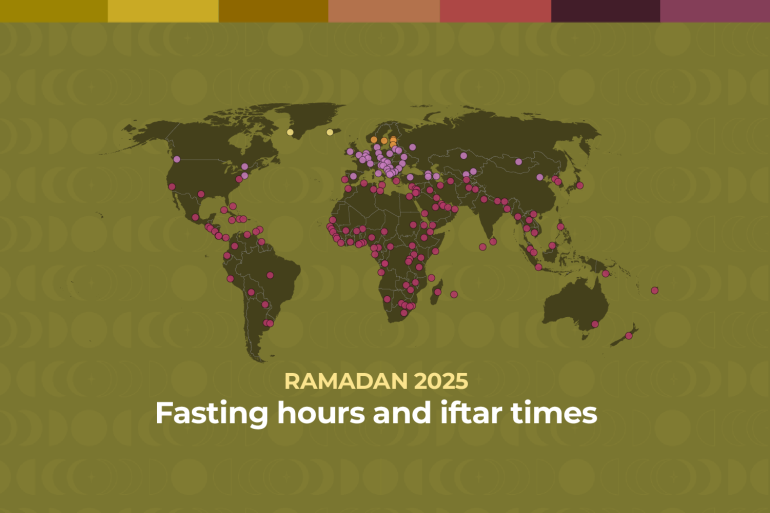Depending on where you are in the world, the dawn-to-dusk fast might last anywhere from 13 to 16 hours.
Globally, the Muslim holy month of Ramadan has begun. Muslims who observe the fast will abstain from food and liquids from sunrise to sunset for the following 29 or 30 days, which might vary from 12 to 16 hours, depending on where they are.
Muslims hold that the Prophet Muhammad received the first verses of the Quran more than 1,400 years ago during the month of Ramadan.
To increase one’s “taqwa,” or awareness of God, the fast involves refraining from eating, drinking, smoking, and having sex during the day.
Why does the start date of Ramadan vary from year to year?
Every year, Ramadan starts 10 to 12 days early. This is due to the fact that the Islamic calendar is based on the 29- or 30-day-long lunar Hijri calendar.
Ramadan will be observed twice in 2030, commencing on January 5 and ending on December 26 due to the lunar year’s 11-day shorter duration than the solar year.

Hours of fasting worldwide
Around the world, there are differences in the amount of daylight hours.
On their longest days, Muslims in the northernmost nations, like Iceland or Greenland, will fast for 16 hours or longer, while those in the southernmost nations, like Chile or New Zealand, will fast for roughly 13 hours.
The length of the fast for Muslims in the Northern Hemisphere will be somewhat reduced this year and will keep going down until 2031, when Ramadan will fall on the winter solstice, the year’s shortest day. In the Northern Hemisphere, fasting hours will then grow until the summer solstice, which is the longest day of the year.
Muslims who fast and live south of the equator will experience the opposite outcome.

In which cities are the fasting hours the longest and the shortest?
The average number of fasting hours in cities worldwide is listed below. The precise minutes and hours of fasting will differ depending on the day and the method of calculating.
Sixteen hours in Nuuk, Greenland;
sixteen hours in Reykjavik, Iceland;
fifteen hours in Helsinki, Finland;
fifteen hours in Oslo, Norway;
fifteen hours in Stockholm, Sweden;
fifteen hours in Glasgow, Scotland;
fourteen hours in Berlin, Germany;
fourteen hours in Dublin, Ireland;
fourteen hours in Moscow, Russia;
fourteen hours in Amsterdam, Netherlands;
fourteen hours in Warsaw, Poland;
fourteen hours in Astana, Kazakhstan

Thirteen hours for Dubai, United Arab Emirates;
thirteen hours for Khartoum, Sudan;
thirteen hours for Riyadh, Saudi Arabia;
thirteen hours for Abuja, Nigeria;
thirteen hours for Aden, Yemen;
thirteen hours for Dakar, Senegal;
thirteen hours for Addis Ababa, Ethiopia;
thirteen hours for Buenos Aires, Argentina;
thirteen hours for Colombo, Sri Lanka;
thirteen hours for Kuala Lumpur, Malaysia;
thirteen hours for Mogadishu, Somalia;
thirteen hours for Ciudad del Este, Paraguay
Thirteen hours from Nairobi, Kenya;
thirteen hours from Harare, Zimbabwe;
thirteen hours from Jakarta, Indonesia;
thirteen hours from Luanda, Angola;
thirteen hours from Bangkok, Thailand;
thirteen hours from Brasilia, Brazil;
thirteen hours from Johannesburg, South Africa;
thirteen hours from Montevideo, Uruguay;
thirteen hours from Canberra, Australia;
thirteen hours from Puerto Montt, Chile;
thirteen hours from Christchurch, New Zealand
Greetings for Ramadan in several languages
Countries with a majority of Muslims have different Ramadan greetings in their native tongues.
The most popular greetings during this time are “Ramadan Mubarak” and “Ramadan Kareem,” which wish the recipient a prosperous or fortunate month, respectively.






